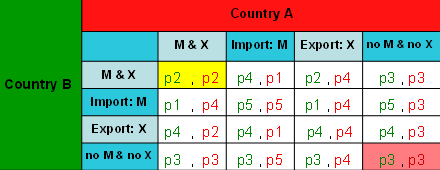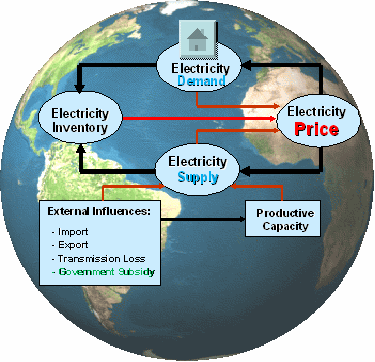About the research
Currently, there is a serious problem with regard to the high price of electricity around the world. There is also the issue of electricity shortage in some countries coexisting with surplus in others. Energy Information Administration (EIA) reports that growth in world electricity generation has outpaced consumption. This sheds light on the problem implying that electricity cooperation (import and export) would be beneficial in solving this problem.
‘The Absolute Advantage’ of Adam Smith (1776), ‘The Comparative Advantage’ of David Ricardo (1817) and ‘Pareto Principle’ of Vilfredo Pareto (1906) all suggest mutual advantages that can arise from efficient import and export. However, many countries have yet to make a decision regarding electricity cooperation.
This study employs ‘Panel Data Analysis, Ordinary Least Square (OLS)’ to demonstrate that import and export can reduce electricity prices, by using 29 Organization for Economic Co-operation and Development (OECD) countries’ yearly data from 1980-2008. The conclusion is that electricity cooperation (import and export) significantly decreases electricity prices. When the world prices of electricity decrease, it will help people to have a higher standard of living and also reduce the cost of industry and business.
Methodology
This study examines whether electricity cooperation (import and export) between countries can help redress the problem of high electricity prices.
The analytical work was based on two steps. Firstly, ‘The Model Representation of Electricity Market’ was developed to define what factors affect electricity price in order to obtain the price function. Secondly, ‘Panel Data Analysis, Ordinary Least Square (OLS)’ was employed to demonstrate coefficients of electricity price.
Impact
References and/or acknowledgements
- Baltagi, B. H. 2005. Econometric Analysis of Panel Data 3rd ed., England, John Wiley and Sons Ltd, West Sussex.
- Labys, W. C. and Pollak, P. K. 1984. Commodity Models for Forecasting and Policy Analysis, Sydney, Australia, Croom Helm Ltd.
- Pareto, V. translated by Schwier, A. S. and Page, A. N. 1972. Manual of Political Economy, The Macmillan Press Ltd, London and Basingstoke.
- Ricardo, D. 1821. On the Principles of Political Economy and Taxation 3rd ed., Ontario, Canada, Batoche Books Kitchener 2001.
- Smith, A. 1776. An Inquiry into the Nature and Causes of the Wealth of Nations, Book 4. http://www.gutenberg.org/etext/3300
Acknowledgements
Comments and suggestions from Prof. Wojciech Charemza, Dr. Subir Bose, Dr. Nicholas V. Vasilakos and Mr. Rob Neill were very helpful in finalising the analysis and text.
Publications
The results initially show that electricity generation produces lower household and industry prices than electricity cooperation (import and export). However, generation subsidies in OECD countries are higher than 10 per cent. When these subsidies are taken into account, the real prices for generation (plus subsidies) are higher than for electricity cooperation (import and export).
Coefficients (βj) of Price Function
ln (Pit) = α + β1 Cit + β2G it + β3 Mit + β4 Xit + εit

significant level: 1 per cent
From the table above, it appears that electricity generation produces lower household and industry prices than import + export.
Generation < Import + Export
Household Electricity Price: -8.73 per cent < -4.57 per cent
Industry Electricity Price: -8.23 per cent < -5.26 per cent
However, generation subsidies in OECD countries are higher than 10 per cent. When these subsidies are taken into account, the real prices for generation are higher than for import + export.
Generation + Subsidies (assume 10 per cent) > Import + Export
Household Electricity Price: +1.27 per cent > -4.57 per cent
Industry Electricity Price: +1.77 per cent > -5.26 per cent
Subsidies come from government income i.e. taxes, and taxes come from people’s income. So when governments subsidise, the people pay for electricity indirectly.
From this study, we can see that both import and export countries will gain a benefit from electricity cooperation. If countries which have excess supply export electricity to countries which have excess demand, the prices in excess demand countries will decrease, and export countries will gain more income.
Electricity Prices of Countries A and B:
based on ‘The Absolute Advantage’ of Adam Smith, 1776

P is electricity price and p1< p2 < p3 < p4 < p5
This table addresses the hypothesis that import and export produce lower prices (p2, p2) than no import and no export (p3, p3) which is a ‘Nash Equilibrium’ payoff.
MODEL: Representation of Electricity Market

Developed from ‘Model Representation of a Commodity Market’ (Walter C. Labys and Peter K. Pollak, 1984)
